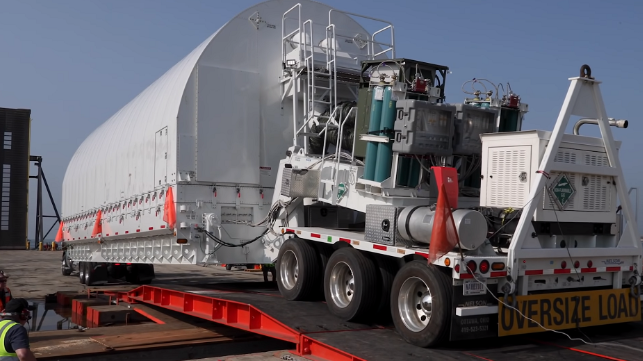High And Heavy: NASA's Most Powerful Space Telescope Ships Out

NASA has successfully shipped the most powerful space telescope in the world from an assembly hall in California all the way to Port de Pariacabo, French Guiana - the service port for the French/EU "Europe's Spaceport" launch site.
The new James Webb Space Telescope is the infrared successor to the famed Hubble, and it is designed to exceed Hubble's powerful capability to see into deep space. By looking at heat signatures from galaxies located billions of light-years away, Webb will be able to peer into the past, catching a glimpse of the earliest era of the universe. It will also focus on a group of nearer solar systems that are still in their early stages, potentially giving astronomers new insights into how planets are formed.
As might be expected, the Webb telescope is an exquisitely sensitive instrument, and NASA took extraordinary precautions for packing and shipment. No standard forty-foot container on a crowded boxship here: the agency's engineers have been planning the route and the special-purpose packing material for 15 years. They devised a double-box system, suspending the telescope within a "coffin" and then loading it into a giant environmental-containment trailer. NASA calls this massive box the Space Telescope Transporter for Air, Road and Sea (or STTARS for short). It is the definition of high and heavy cargo: a trailer 110 feet long, 15 feet wide, 17 feet tall and 165,000 pounds empty - about ten times the mass of the telescope itself.
The process of moving this trailer from an assembly plant to a pier in Los Angeles was a carefully choreographed feat. NASA's engineers surveyed the 26-mile route by satellite and by eye, making sure potholes were filled, trees were trimmed up and powerlines lifted. The route had to be carefully picked to ensure that all bridges were rated to accept the trailer's extreme weight - and that any turns were wide enough to accommodate its huge turning radius.
At Naval Weapons Station Seal Beach - just east of the Port of Long Beach - the STARRS trailer and its precious cargo were loaded aboard a deck barge, then transferred to the ro/ro vessel MN Colibri. Once the cargo was secured, Colibri got under way. She passed through the Panama Canal and arrived safely at Port de Pariacabo, Kourou, French Guiana on October 12.

that matters most
Get the latest maritime news delivered to your inbox daily.
Once STARRS has been carefully towed from the pier at Pariacabo up to the European Space Agency's launch site at Kourou, the Webb telescope will be unpacked and thoroughly tested to make sure it survived shipping. It will be loaded onto the top of an Ariane 5 rocket, wrapped in a special fairing and - when all is ready - shot into space. Its final destination is a steady orbit in line with both the Earth and the sun, about four times as far away from Earth as the distance to the moon. Out that far, it will be easier to keep the telescope at the super-cold temperatures it needs to pick up faint traces of infrared light.
“The James Webb Space Telescope is a colossal achievement, built to transform our view of the universe and deliver amazing science,” said NASA Administrator Bill Nelson. “Webb will look back over 13 billion years to the light created just after the big bang, with the power to show humanity the farthest reaches of space that we have ever seen."
